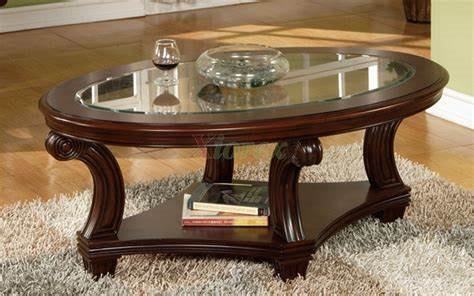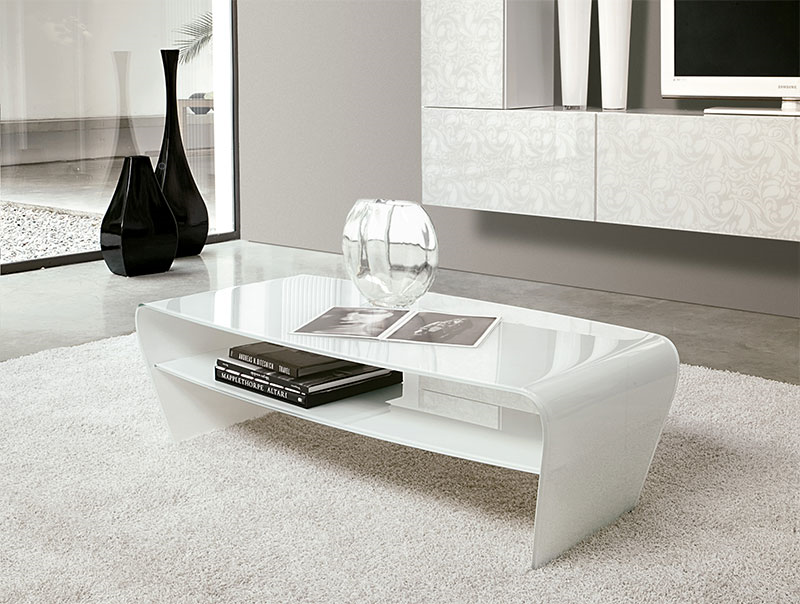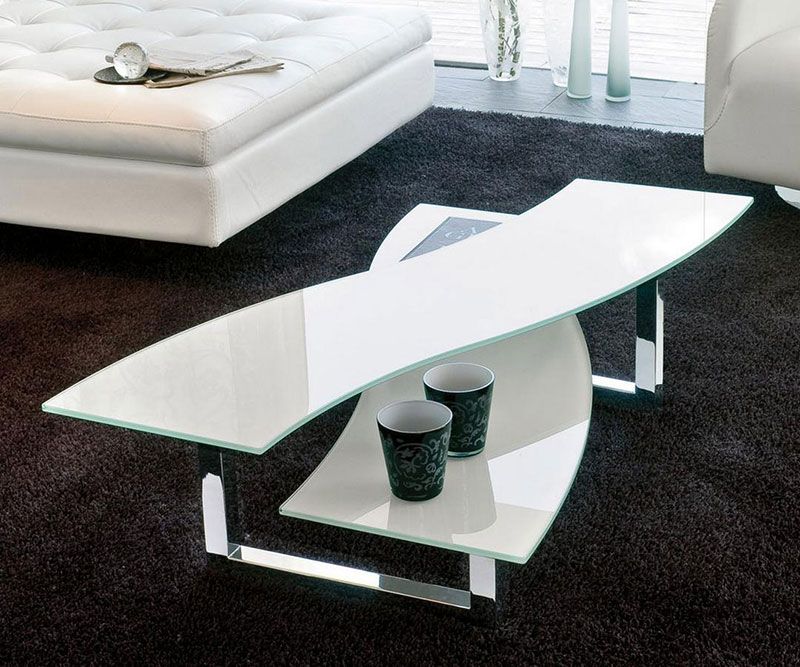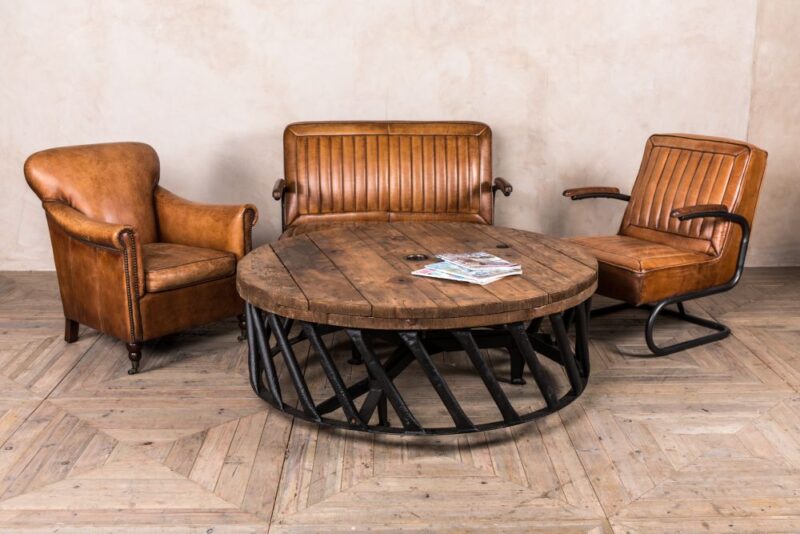.
What Size Coffee Table Should I Get?
What size coffee table should I get depends on various factors, including the dimensions of your living space, seating arrangement, and personal preferences. Here’s a guide to help you determine the appropriate size for your coffee table:
- Consider the Seating Arrangement: The coffee table’s size should complement your seating arrangement. It should be within easy reach of all seating positions without obstructing movement. Measure the distance from the edge of your sofa or chairs to the spot where you want to place the coffee table.
- Proportion and Scale: The coffee table’s size should be proportional to the size of your seating area. If you have a large sofa and spacious room, a larger coffee table might work well. For smaller seating areas, opt for a smaller table.
- Table Shape: Different table shapes offer various advantages. Rectangular tables often work well in longer seating areas, while square tables can be ideal for creating balance in symmetrical layouts. Round tables can soften the lines of a room and work well in smaller spaces.
- Clearance Space: Aim for at least 18 inches (45 cm) of space between the coffee table and the sofa or seating to allow comfortable legroom and movement.
- Functionality: Consider how you’ll use the coffee table. If you often entertain or use it for storage, you might want a larger table. If it’s primarily for holding drinks and books, a smaller table might suffice.
- Room Dimensions: In larger rooms, a bigger coffee table can fill the space and balance the room. In smaller rooms, opt for a more compact table to avoid overwhelming the area.
- Height: Coffee tables are typically around 16 to 18 inches (40 to 45 cm) in height, which aligns well with most seating. However, you can go slightly higher or lower depending on your preference and the style of your furniture.
- Style and Aesthetics: The coffee table should complement your room’s decor. Choose a style, material, and color that harmonize with your existing furniture and design scheme.
- Functionality: Consider any additional features you might want, such as shelves, drawers, or lift-tops, to enhance the table’s practicality.
- Try Before Buying: If possible, physically test different coffee table sizes in your space before making a decision. This can help you visualize how they fit and assess their comfort and functionality.
- Personal Preference: Ultimately, your personal taste matters. Choose a coffee table size that you find visually appealing and suits your needs.
Remember that there are no hard and fast rules, and the “right” size can vary based on individual preferences and room layouts. It’s important to find a balance between functionality, aesthetics, and comfort to ensure your coffee table becomes a seamless and useful addition to your living space.

Consider Your Space.
What size coffee table should i get absolutely depends on the big picture, your room available. Considering the size of your room and the available space is crucial when choosing a coffee table. Here are some specific guidelines based on different room sizes:
- Small Rooms:
- Opt for a smaller coffee table to prevent overcrowding the space.
- Consider a round or oval table with no sharp corners to make movement easier.
- A glass or acrylic table can create a sense of openness and visually expand the room.
- If you have limited space, consider nesting tables that can be pulled out when needed and tucked away when not in use.
- Medium-Sized Rooms:
- You have more flexibility in terms of size, but still, avoid an overly large table that dominates the room.
- Choose a table that provides ample surface area without overwhelming the seating area.
- A rectangular or square table can work well in medium-sized rooms, offering a balanced look.
- Large Rooms:
- You can consider a larger coffee table to fill the space and anchor the seating area.
- A larger rectangular or square table can work, especially if you have a sectional sofa or multiple seating arrangements.
- If you have a spacious room with multiple seating zones, you might even consider using multiple smaller coffee tables strategically placed throughout the space.
- Open-Concept Spaces:
- In open-layout spaces where the living area seamlessly blends with other rooms, maintain a consistent style and size for the coffee table to create visual coherence.
- Ensure the coffee table doesn’t obstruct the flow between different zones while providing functionality to each area.
- L-Shaped or Sectional Sofas:
- When dealing with an L-shaped or sectional sofa, consider an appropriately sized coffee table for the entire seating arrangement.
- An elongated rectangular table that spans the length of the sectional can be visually appealing and practical.
- Traffic Flow:
- Ensure there’s enough space around the coffee table for easy movement and to avoid creating a cluttered or cramped feeling.
- Ceiling Height:
- In rooms with high ceilings, a taller coffee table might work well to balance the vertical space. In rooms with lower ceilings, a lower table can create a cozier atmosphere.
- Multi-Purpose Rooms:
- If your living room serves multiple purposes (e.g., dining and living), consider a coffee table that complements the other functions of the room.
Remember that these are general guidelines, and there’s no one-size-fits-all solution. Always measure your space carefully and take into account the layout, existing furniture, and your personal preferences when selecting the right coffee table size for your room.
Height Matters Too!
Absolutely, what size coffee table should i get depends also on the height you’re considering in a table. It is important height as well as its size must be considered when it comes to creating a comfortable and functional living space. Here’s a guide to help you choose the right height for your coffee table:
- Comfortable Reach: The ideal height for a coffee table is generally around the same height as the cushions of your sofa or seating. This allows for easy access to items on the table without straining or stretching.
- Standard Heights: Coffee tables typically range from 16 to 18 inches (40 to 45 cm) in height, which aligns well with most standard seating heights. This provides a comfortable reach for placing drinks, snacks, and other items.
- Consider Your Seating: Measure the height of your sofa or chairs and aim for a coffee table that’s slightly lower or at the same level. This ensures that you and your guests can easily reach the table’s surface without feeling awkward.
- Functionality: Consider how you plan to use the coffee table. If you often dine or work at the table, you might prefer a slightly higher table to provide a more ergonomic surface. However, make sure it’s not so high that it becomes uncomfortable for resting your arms or reaching items.
- Visual Balance: The coffee table’s height should complement the surrounding furniture. If you have low-slung furniture, a lower coffee table can maintain a balanced visual aesthetic. Similarly, if you have taller seating, a slightly higher table can work well.
- Style and Design: Different design styles might call for variations in coffee table height. For example, a modern, minimalistic space might benefit from a lower table, while a more traditional room could accommodate a slightly taller table.
- Layering and Stacking: If you plan to layer decorative elements on the table, consider a height that allows for different levels of arrangement without obstructing views or creating clutter.
- Adjustable Options: If you’re uncertain about the ideal height or plan to use the table for various purposes, you might consider an adjustable coffee table that can be raised or lowered as needed.
- Personal Preference: Ultimately, your comfort and preferences matter most. Sit on your sofa or chairs and visualize the height that would be most convenient for your everyday activities.
- Experimentation: If possible, test out different coffee table heights by temporarily placing objects of various heights on your seating to see what feels most natural and comfortable.

Choosing the right coffee table height is about finding the balance between functionality and aesthetics. It should be a comfortable extension of your seating area, enhancing your overall living space experience.
Consider the Shape.
Coffee tables come in a variety of shapes, including rectangular, square, round, and oval. The shape you choose will depend on your personal style preferences and the layout of your living room. Rectangular and square coffee tables are great for larger spaces, while round and oval tables work well in smaller rooms or spaces with a lot of traffic flow. If you have young children or pets, you may want to consider a round or oval coffee table with rounded edges to prevent accidents.

Functionality is Important.
Absolute functionality is a crucial consideration when choosing a coffee table. A coffee table should not only look good in your living space but also serve practical purposes that enhance your daily life. Here’s how to ensure your coffee table meets your functional needs:
- Storage Options: Depending on your storage needs, consider coffee tables with shelves, drawers, or hidden compartments. These features can help keep your living space organized by storing magazines, remote controls, and other items.
- Lift-Top Tables: If you often eat, work, or use your laptop on the coffee table, a lift-top table can be highly functional. It provides a versatile surface that can be adjusted to different heights.
- Nested Tables: Nested tables are multiple smaller tables that can be stacked together or used separately. They are especially useful in smaller spaces or for occasional use when you need extra table space.
- Display Space: If you enjoy showcasing decorative items or books, choose a coffee table with a spacious and flat surface. Consider tables with glass tops, which allow you to display items on a visible shelf underneath.
- Durability and Material: Consider the material of the coffee table in relation to its functionality. If you have young children or pets, a sturdy and easy-to-clean material might be a priority.
- Multi-Purpose Use: Think about how the coffee table can serve different purposes. For example, it could function as a place to eat, work, play board games, or even as additional seating when needed.
- Cord Management: If you plan to have electronics like lamps or chargers on your coffee table, look for tables with built-in cord management features to keep wires organized and hidden.
- Stability and Weight Capacity: Ensure that the coffee table is stable and has the weight capacity to support the items you intend to place on it.
- Pet-Friendly Design: If you have pets, consider a coffee table with rounded corners to prevent injuries, and avoid tables with intricate designs that might trap fur.
- Easy to Clean: Choose a coffee table that’s easy to clean and maintain. Spills and messes are inevitable, so opt for materials that can be wiped clean without much effort.
- Versatility: A versatile coffee table can adapt to different situations. Look for tables with wheels or lightweight designs that can be easily moved around when needed.
Remember that while aesthetics is important, the functionality of the coffee table should align with your lifestyle and the way you use your living space on a daily basis. By considering how you plan to use the table and what features would make your life more convenient, you can choose a coffee table that truly enhances your living experience.
What Size Coffee Table Should I Get More Options!
A coffee table is an essential piece of furniture in any living room or lounge area. It serves as a functional centrepiece that not only provides a place to rest your drinks and snacks but can also add to the overall aesthetic of the space. When selecting a coffee table, it’s important to consider the features that will best suit your needs and style. In this blog post, we will discuss some of the key features that a coffee table should offer.

- Adequate Size and Shape The size and shape of your coffee table should be determined by the layout of your living room and the amount of space available. A coffee table that is too small or too large can throw off the balance of the room. The ideal coffee table should be proportional to the size of your sofa and chairs, and its shape should complement the overall shape of the room.
- Sturdy Construction A coffee table should be able to withstand daily use and the weight of items placed on it. It’s important to select a table that is made of high-quality materials and has sturdy construction. Look for tables made from solid wood, metal, or tempered glass.
- Storage Space A coffee table with storage space is a great option for those who want to keep their living room tidy and organized. Look for tables with built-in shelves, drawers, or compartments that can be used to store books, magazines, remote controls, and other items.
- Versatility A versatile coffee table can serve multiple purposes and adapt to different situations. Look for tables that can be easily moved around, such as those with wheels or those that can be lifted to serve as a dining table or work surface.
- Style and Design A coffee table should complement the overall style and design of your living room. Choose a table that matches the existing décor and adds to the aesthetic of the space. Consider the colour, material, and shape of the table to ensure that it fits in seamlessly.
In conclusion, a coffee table is an important piece of furniture that should offer both functionality and style. When selecting a coffee table, consider its size and shape, construction, storage space, versatility, and design to ensure that it meets your needs and adds to the overall aesthetic of your living room.
Consideration.
In conclusion, when choosing a coffee table, it’s important to consider the size of your living room, the height of the table, the shape, and its functionality. By keeping these factors in mind, you’ll be able to choose a coffee table that not only looks great but also meets your needs and fits perfectly in your space.
Author.
Brendon McAliece is a multi-lingual expat who brings over three decades of flight simulator/PC building experience as well as over two decades of real-world jet fighter experience as a weapons/egress technician. He holds a sport pilot certificate giving him real-world flying experience. Hi travels have taken him from Europe to the Middle East, Asia and his home of Australia. He has a passion for travel, languages, Flight simulation as well as Guitaring and Coffee. You can read more in his blogs below.

Learn more @
DreamingGuitar.com – DreamingCoffee.com – LetsFlyVFR.com
Home – Blog – Shop – About
As an Amazon affiliate I may earn on qualifying sales.





